- Clone
- 50C1 (See other available formats)
- Regulatory Status
- RUO
- Workshop
- HCDM listed
- Other Names
- CLL1, MICL, CLL-1, DCAL-2, C-type lectin domain family 12 member A, CD371
- Isotype
- Mouse IgG2a, κ
- Barcode Sequence
- CATTAGAGTCTGCCA
- Ave. Rating
- Submit a Review
- Product Citations
- publications
| Cat # | Size | Price | Quantity Check Availability | Save | ||
|---|---|---|---|---|---|---|
| 353617 | 10 µg | 296€ | ||||
CD371 (CLEC12A), also known as DCAL-2, MICL or CLL-1, is a 30 kD type II transmembrane protein with extracellular C-type lectin domains, belonging to the C-type lectin family. It is expressed on monocytes, granulocytes, NK cells, and basophils. Its cytoplasmic ITIM motif modulates signaling cascades and is involved in phosphorylation of tyrosine residues in MAP kinases.
Product DetailsProduct Details
- Verified Reactivity
- Human
- Antibody Type
- Monoclonal
- Host Species
- Mouse
- Immunogen
- 293T cells expressing CLEC12A-Flag
- Formulation
- Phosphate-buffered solution, pH 7.2, containing 0.09% sodium azide and EDTA
- Preparation
- The antibody was purified by chromatography and conjugated with TotalSeq™-D oligomer under optimal conditions.
- Concentration
- 0.5 mg/mL
- Storage & Handling
- The antibody solution should be stored undiluted between 2°C and 8°C. Do not freeze.
- Application
-
PG - Quality tested
- Recommended Usage
-
Each lot of this antibody is quality control tested by immunofluorescent staining with flow cytometric analysis and the oligomer sequence is confirmed by sequencing. TotalSeq™-D antibodies are compatible with Mission Bio’s Tapestri Single-Cell Sequencing Platform for simultaneous detection of DNA and Protein.
To maximize performance, it is strongly recommended that the reagent be titrated for each application, and that you centrifuge the antibody dilution before adding to the cells at 14,000xg at 2 - 8°C for 10 minutes. Carefully pipette out the liquid avoiding the bottom of the tube and add to the cell suspension. For Proteogenomics analysis, the suggested starting amount of this reagent for titration is ≤ 1.0 µg per million cells in 100 µL volume. Refer to the corresponding TotalSeq™ protocol for specific staining instructions.
Buyer is solely responsible for determining whether Buyer has all intellectual property rights that are necessary for Buyer's intended uses of the BioLegend TotalSeq™ products. For example, for any technology platform Buyer uses with TotalSeq™, it is Buyer's sole responsibility to determine whether it has all necessary third party intellectual property rights to use that platform and TotalSeq™ with that platform. - Additional Product Notes
-
TotalSeq™-D reagents are designed to profile protein expression at single cell level. The Mission Bio Tapestri platform and sequencer (e.g. Illumina analyzers) are required. Please contact technical support for more information, or visit biolegend.com/totalseq/single-cell-dna
The barcode flanking sequences are CGAGATGACTACGCTACTCATGG (PCR handle), and GAGCCGATCTAGTATCTCAGT*C*G (capture sequence). * indicates a phosphorothioated bond, to prevent nuclease degradation.
View more applications data for this product in our Application Technical Notes. -
Application References
(PubMed link indicates BioLegend citation) -
- Lahoud MH, et al. 2009. J. Immunol. 182:7587. (FC)
- Lahoud MH, et al. 2011. J. Immunol. 187:842. (FC)
- Neumann K, et al. 2014. Immunity. 40:389. PubMed
- RRID
-
AB_2904374 (BioLegend Cat. No. 353617)
Antigen Details
- Structure
- Type II C-type lectin family member, 265 aa, 30.7 kD
- Distribution
-
Monocytes, granulocytes, NK cells, and basophils
- Function
- Negative regulator of granulocyte and monocyte function
- Interaction
- PTPN6 and PTPN11
- Cell Type
- Basophils, Dendritic cells, Granulocytes, Monocytes, NK cells
- Biology Area
- Immunology, Costimulatory Molecules
- Molecular Family
- CD Molecules
- Antigen References
-
1. Lahoud MH, et al. 2009. J. Immunol. 182:7587.
2. Chen CH, et al. 2006. Blood 107:1459.
3. Marshall AS, et al. 2004. J. Biol. Chem. 279:14792. - Gene ID
- 160364 View all products for this Gene ID
- UniProt
- View information about CD371 on UniProt.org
Related Pages & Pathways
Pages
Related FAQs
Other Formats
View All CD371 Reagents Request Custom Conjugation| Description | Clone | Applications |
|---|---|---|
| Purified anti-human CD371 (CLEC12A) | 50C1 | FC |
| PE anti-human CD371 (CLEC12A) | 50C1 | FC |
| APC anti-human CD371 (CLEC12A) | 50C1 | FC |
| FITC anti-human CD371 (CLEC12A) | 50C1 | FC |
| PE/Cyanine7 anti-human CD371 (CLEC12A) | 50C1 | FC |
| PerCP/Cyanine5.5 anti-human CD371 (CLEC12A) | 50C1 | FC |
| TotalSeq™-A0853 anti-human CD371 (CLEC12A) | 50C1 | PG |
| TotalSeq™-C0853 anti-human CD371 (CLEC12A) | 50C1 | PG |
| TotalSeq™-D0853 anti-human CD371 (CLEC12A) | 50C1 | PG |
| TotalSeq™-B0853 anti-human CD371 (CLEC12A) | 50C1 | PG |
| Alexa Fluor® 647 anti-human CD371 (CLEC12A) | 50C1 | FC |
Compare Data Across All Formats
This data display is provided for general comparisons between formats.
Your actual data may vary due to variations in samples, target cells, instruments and their settings, staining conditions, and other factors.
If you need assistance with selecting the best format contact our expert technical support team.
-
Purified anti-human CD371 (CLEC12A)
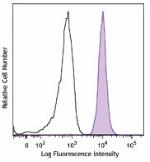
Human peripheral blood monocytes were stained with purified ... -
PE anti-human CD371 (CLEC12A)
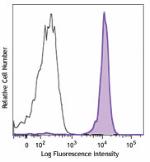
Human peripheral blood monocytes were stained with anti-huma... -
APC anti-human CD371 (CLEC12A)
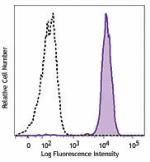
Human peripheral blood monocytes were stained with anti-huma... -
FITC anti-human CD371 (CLEC12A)
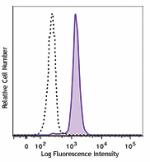
Human peripheral blood monocytes were stained with anti-huma... -
PE/Cyanine7 anti-human CD371 (CLEC12A)

Human peripheral blood monocytes were stained with anti-huma... -
PerCP/Cyanine5.5 anti-human CD371 (CLEC12A)
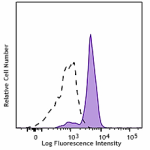
Human peripheral blood monocytes were stained with CD371 (CL... -
TotalSeq™-A0853 anti-human CD371 (CLEC12A)
-
TotalSeq™-C0853 anti-human CD371 (CLEC12A)
-
TotalSeq™-D0853 anti-human CD371 (CLEC12A)
-
TotalSeq™-B0853 anti-human CD371 (CLEC12A)
-
Alexa Fluor® 647 anti-human CD371 (CLEC12A)

Human peripheral blood monocytes were stained with anti-huma...
 Login / Register
Login / Register 













Follow Us